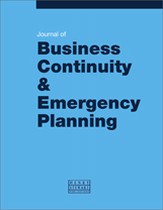Creating meaningful business continuity management programme metrics
Abstract
The popular axiom, ‘what gets measured gets done’, is often applied in the quality management and continuous improvement disciplines. This truism is also useful to business continuity practitioners as they continually strive to prove the value of their organisation’s investment in a business continuity management (BCM) programme. BCM practitioners must also remain relevant to their organisations as executives focus on the bottom line and maintaining stakeholder confidence. It seems that executives always find a way, whether in a hallway or elevator, to ask BCM professionals about the company’s level of readiness. When asked, they must be ready with an informed response. The establishment of a process to measure business continuity programme performance and organisational readiness has emerged as a key component of US Department of Homeland Security ‘Voluntary Private Sector Preparedness (PS-Prep) Program’ standards where the overarching goal is to improve private sector preparedness for disasters and emergencies. The purpose of this paper is two-fold: to introduce continuity professionals to best practices that should be considered when developing a BCM metrics programme as well as providing a case study of how a large health insurance company researched, developed and implemented a process to measure BCM programme performance and company readiness.
The full article is available to subscribers to the journal.
Citation
Strong, Brian (2010, November 1). Creating meaningful business continuity management programme metrics. In the Journal of Business Continuity & Emergency Planning, Volume 4, Issue 4. https://doi.org/10.69554/NJEH9908.Publications LLP
